|
|
Cavity Nester Nests, Eggs and Young Photos and Bios. Also see Nest ID Matrix (contents) and Egg ID Matrix (color, spots, etc.) Select bird name (alphabetical):
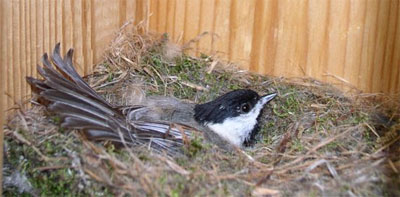 |
Carolina Chickadee female on nest. . Photo by LeAnn Sharp of TX. |
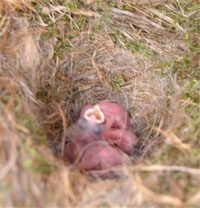 |
Hatchlings: notice white bill edges with yellow gape, and salmon colored skin. Photo by LeAnn Sharp of TX. |
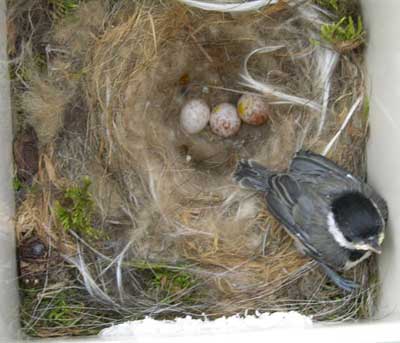 |
Carolina Chickadee nest in a PVC box with a single baby that is about to fledge. Photo by Keith Kridler. One of the unhatched eggs egg has leaked onto the egg next to it. Description: Nest base of moss, sometimes with strips of bark, thickly lined with grass, plant fibers, fur, hair. Eggs are ovate to rounded ovate, white, finely marked with reddish-brown dots, spots or blotches, often concentrated on the larger end, little or no gloss. |
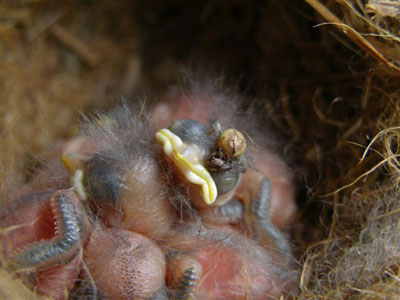 |
Carolina Chickadee nestlings, photo by Keith Kridler of TX, taken April 10, 2008. The item on the nestlings face is a spider – apparently the parents missed the baby’s mouth during feeding – half the spider is crushed. |
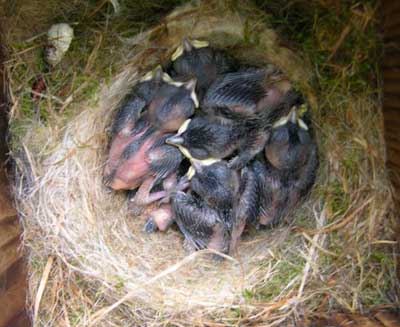 |
Eight Carolina Chickadees (seven beaks and an eighth butt visible). Photo by Keith Kridler of TX, taken April 10, 2008. |
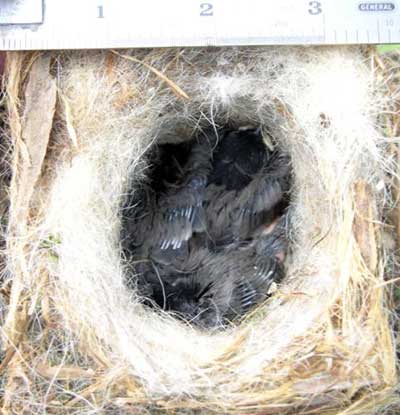 |
Carolina Chickadee young. Photo by Keith Kridler. These nestlings hatched the same day as the baby in the photograph above. Keith noted the difference in tail feather development, which may be based on the amount of quality of food received. The two boxes were about 700 feet apart. |
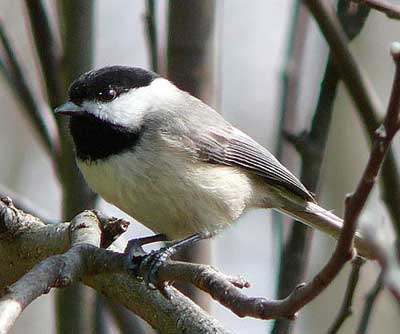 |
Adult Carolina Chickadee photographed in NC. Wikimedia Commons photo by Ken Thomas. Click on image for larger version. |
MORE INFORMATION:
The student of Nature wonders the more and is astonished the less, the more conversant he becomes with her operations; but of all the perennial miracles she offers to his inspection, perhaps the most worthy of admiration is the development of a plant or of an animal from its embryo. -Thomas Henry Huxley, British biologist and educator. Reflection #54, Aphorisms and Reflections, selected by Henrietta A. Huxley, Macmillan, 1907.
